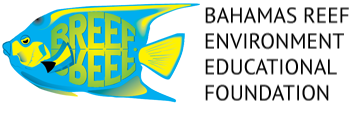As scientists race to find cures for the COVID-19 virus, maybe they should look to the ocean for some help. Ocean discoveries that helped advance the medical field are not something new. For decades, scientists have turned to the ocean for new drugs.
Think about it, marine organisms are often surrounded by fungi, bacteria, and other organisms waiting to turn them into food. As a result, both the predator and the prey have developed complex biological molecules that help them survive. Over the years, scientists found that biological molecules created as a defense mechanism by marine animals often turn out to be great antiviral, antibacterial, and anticancer drugs.
Take sea sponges, for example, they cannot move and lack physical defenses, which make them vulnerable to other marine organisms such as turtles and fish. However, sea sponges have developed a variety of defense molecules to ward off predators.
In the 1950s, the first marine-derived anticancer agent, Ara-C was created from a shallow-water sea sponge – Cryptotethya crypta, now known as Tectitethya crypta. Today, the drug is still used to treat lymphoma and leukemia. Cryptotethya crypta was also used to make the drug AZT which helps fight the HIV virus.
The mangrove tunicate is a colonial sea squirt that’s found right here in The Bahamas. It was used to create a cancer drug called Trabectedin. Similar to the sea sponge, adult mangrove tunicates have limited to no mobility. Sea hare eggs also produce compounds that inhibit the growth of cancer cells.
Then there is the Pacific cone snail whose venom is used to create the drug Prialt. The cone snail has harpoon-like stingers that release poison strong enough to paralyze and/or kill fish and humans.
“I thought that if these snails were so powerful that they could paralyze the nervous system, smaller doses of the compounds from the venoms might have beneficial effects,” said Baldomero Olivera, a biochemist at the University of Utah.
Olivera conducted the research that led to the discovery of the drug Prialt. The drug is used to treat severe and chronic pain and is said to be 1,000 times as powerful as morphine.
Other ocean discoveries like marine microalga acids have revolutionized human life. The marine microalga, Cryptocodinium cohnii, produces two essential fatty acids found in human breast milk. Scientists have extracted these acids and used them to create infant formula.
These discoveries only scrape the surface. With more than 80% of the ocean unexplored, who knows what new discoveries are out there.
There is an old Island saying that goes “Take care of the boat and the boat will take care of you.” From the beginning of time, the ocean has supported human life. It provides us with food, medicines, water, and oxygen.
As we look to the ocean for medical solutions, we must ensure fair access to and equitable benefits from the marine resources extracted. It is important that local communities, indigenous people, and the world benefit from these resources.
Let us all do our part to conserve, protect, and preserve our marine resources, discovered or undiscovered.
____________________________________________
Quote from biochemist, Baldomero Olivera extracted from Smithsonian article.



Post a comment